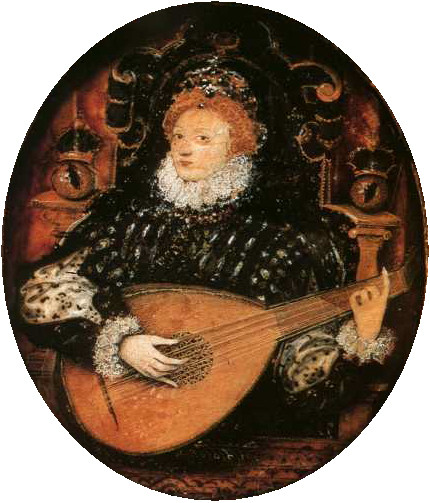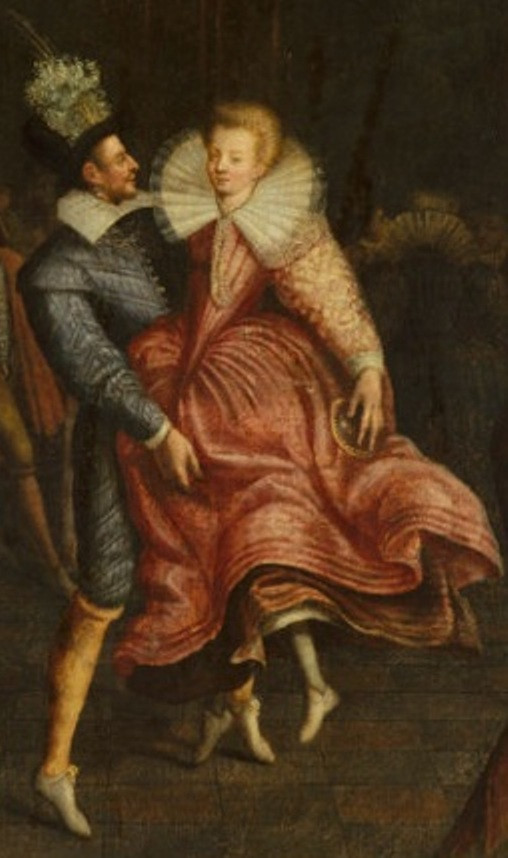A Volta Dance is a vibrant Renaissance dance characterized by couples leaping, lifting, and turning. Discover its origins, scandalous reputation, and whether Queen Elizabeth I truly danced this energetic routine with ten-dance.com. We’ll explore its unique choreography and uncover the reasons behind its controversial past, and the modern styles you can try today. Master historical dance steps and experience the lively traditions of the volta.
1. What Is the Historical Significance of La Volta Dance?
La volta, a dynamic dance from the Renaissance period, is significant because it reflects the social and moral tensions of the time, influenced courtly entertainment, and stands as a precursor to modern dance styles. It’s a variation of the galliard, and it was known for its lively, athletic movements involving couples leaping and turning together. Its introduction to the French court by Catherine de’ Medici around 1556 marked its rise in popularity across Europe, including England, and it became a favorite among the European courts from the mid-16th to the mid-17th century, but its scandalous nature also drew criticism. This dance mirrored the era’s shifting attitudes toward social propriety and religious conservatism, while still holding an influential role in courtly entertainment, and paving the way for the evolution of dance into more expressive and physically engaging forms.
2. What Are the Key Choreographic Elements of La Volta?
The key choreographic elements of la volta include the galliard’s five-step sequence, energetic lifts and turns, and close physical contact between partners, which distinguished it from other more reserved dances. The foundational step of la volta is the galliard, the cinque-pas or five-step, counted 1 2 3 4 _ 6 since, on the fifth of the six beats, the dancer has sprung himself or herself into the air. To execute the volta, the male partner would grasp the female partner around the waist, assisting her in a leaping turn. This physical interaction, combined with the fast-paced, whirling motions, made la volta a more intimate and vigorous dance compared to the restrained dances of the time. Thoinot Arbeau, writing in “Orchésographie”, described it thus: “When you wish to turn, release the damsel’s left hand and throw your left arm around her, grasping and holding her firmly by the waist above the right hip with your left hand. At the same moment, place your right hand below her busk to help her to leap when you push her forward with your left thigh.” This description highlights the close embrace and physical support required, showcasing the dance’s distinctive and somewhat daring nature.
3. Why Was La Volta Considered Scandalous in the Renaissance Era?
La volta was considered scandalous in the Renaissance era due to its close physical contact between dancers, energetic movements, and perceived threat to social and moral norms, contrasting sharply with the more reserved dances of the time. The primary source of the scandal was the intimate nature of the dance, where male partners would lift and turn their female partners, requiring them to hold each other closely. Religious moralists viewed such physical contact as provocative and a threat to public decorum. Philip Stubbes, in his 1583 publication “The Anatomie of Abuses,” criticized mixed-sex dancing, arguing that it provoked lust and ungodly temptations. He questioned the “clipping, what culling, what kissing and bussing, what smouching & slabbering of one another? what filthy groping & unclean handling is not practised everywhere in these dauncings?” These concerns reflected a broader anxiety about the potential for dance to incite immoral behavior. The volta was seen as a “gateway dance,” leading to more destructive vices, and its acceptance in royal courts only intensified the controversy.
4. How Did Religious Views Influence Attitudes Toward La Volta and Dancing in General?
Religious views significantly influenced attitudes toward la volta and dancing in general, with some seeing dance as a form of praise and celebration, while others condemned it as a source of immorality and temptation. The Bible contains varied references to dance, with some passages portraying it positively as a means of praising God and expressing joy. Exodus 15:20 describes Miriam leading women in dance with timbrels, and Psalm 149:3 encourages praising God’s name with dancing. However, more conservative religious figures, particularly Puritans, focused on biblical stories where dance was associated with sin. The Israelites’ idolatrous dancing before the golden calf (Exodus 32:19) and Salome’s dance leading to John the Baptist’s beheading (Mark 6:14-27) were often cited as examples of the dangers of dance. Clerics like John Northbrooke, in his “A Treatise Against Dicing, Dancing, Plays, and Interludes,” described dancing as “the vilest vice of all,” associating it with “disordinate gestures” and “unchast handes.” These differing interpretations of religious texts led to a wide range of attitudes toward dance, with la volta specifically criticized for its perceived immodesty and potential to incite lust.
5. Was Queen Elizabeth I Really a Dancer of La Volta?
While Queen Elizabeth I was known to be a lover of music and dance, particularly the galliard, there is no definitive primary evidence to confirm that she danced la volta. Historical accounts and popular culture often depict Elizabeth I dancing la volta with her favorite courtier, Robert Dudley, Earl of Leicester. However, Tudor dance specialist Anne Daye and historian Jane Moulder have found no concrete evidence to support this claim. Elizabeth was a political figure who had to be extremely careful about her public image and behavior. Jane Moulder stated she is “absolutely sure in my own mind that she would never had danced la volta with anyone, let alone Dudley,” given the potential for scandal and the diplomatic implications.
 Queen Elizabeth I Playing the Lute
Queen Elizabeth I Playing the Lute
Queen Elizabeth I is depicted playing the lute in a miniature by Nicholas Hilliard, circa 1580, highlighting her appreciation for music.
The painting often cited as evidence, titled Queen Elizabeth I Dancing with Robert Dudley, Earl of Leicester, is of French origin and the identities of the dancers are unknown. It’s more likely that the painting’s title was a way of symbolizing their emotional closeness or, conversely, highlighting the alleged scandalous nature of their relationship in the eyes of their enemies. While the story of Elizabeth dancing la volta is popular, it remains largely based on hearsay rather than historical fact.
6. How Did La Volta Influence Other Dances and Social Customs?
La volta influenced other dances and social customs by challenging traditional norms of physical interaction and paving the way for more expressive and intimate dance forms. It broke the standard decorum of Renaissance dances, where men and women maintained a respectable physical distance, touching only palms. By introducing close physical contact, including the man lifting the woman, la volta set a precedent for future dances that allowed greater intimacy. This shift reflected a broader change in social attitudes toward physical expression and relationships between men and women. While la volta itself eventually faded in popularity, its impact can be seen in the evolution of dance towards more physically engaging styles, such as the waltz, which also faced initial controversy due to its close embrace.
7. What Were Some Notable Criticisms of La Volta From Contemporary Observers?
Notable criticisms of la volta from contemporary observers included moral outrage over its immodest movements, concerns about its impact on health, and accusations that it promoted immoral behavior. Jehan Tabourot, even while defending dance in general, considered la volta dangerous to decorum and physical wellbeing. He noted that after spinning around, a young girl would feel her “brain reeling and her head full of dizzy whirlings,” and questioned whether it was “a becoming thing for a young girl to take long strides and separations of the legs.” Johann von Münster, in his Ein Gottseliger Tractat von dem ungottseligen Tantz (1592), expressed outrage that the dance involved grasping the young lady “in an unseemly place.” He was horrified to see this dance practiced at the Royal Court of King Henry III, considering it a “lewd and unchaste dance.” Johannes Praetorius, in his Blockes-Berges Verrichtung (1668), condemned la volta as “a foreign dance in which they seize each other in lewd places,” attributing it to conjurors from Italy and accusing it of causing “innumerable murders and miscarriages.” These criticisms highlight the strong moral and social objections raised against la volta due to its perceived indecency.
8. How Did Clothing of the Time Contribute to the Scandal of La Volta?
The elaborate clothing of the time, particularly women’s fashion, heightened the scandal of la volta by drawing attention to the intimate physical contact required in the dance. Women of the 16th and 17th centuries wore multiple layers of clothing designed to exaggerate their shape, including farthingales and bum rolls to create a wide skirt, and tight corsets stiffened by a busk to reduce the size of their upper body. The busk, a long, carved piece of wood or ivory inserted into the corset, kept the torso straight and upright. In la volta, the male partner would place his hand below the woman’s busk to help her leap, bringing his hand close to a very intimate part of her anatomy. This gesture, combined with the swirling movements of the dance, drew attention to the body and heightened the perception of indecency. The clothing, intended to display wealth and status, ironically contributed to the dance’s scandalous reputation by emphasizing the physical closeness that moralists found objectionable.
9. Are There Any Modern Interpretations or Performances of La Volta?
Yes, there are modern interpretations and performances of la volta, often by historical dance groups and in theatrical productions, aiming to recreate the dance’s original steps and cultural context. Historical dance groups, such as Nonsuch, perform la volta to educate audiences about Renaissance dance and culture. These performances often involve meticulous research to reconstruct the dance steps, music, and costumes accurately. The Night Watch has even performed two voltas, combining English and German melodies from the 16th and 17th centuries. While modern performances strive for historical accuracy, some contemporary choreographers may also incorporate elements of la volta into new dance works, blending historical and modern styles. These interpretations keep the spirit of la volta alive, allowing audiences to experience and appreciate its unique energy and historical significance.
10. What Can La Volta Teach Us About the History of Dance and Social Mores?
La volta teaches us that dance has historically been a reflection of social values, moral standards, and evolving relationships between people, and that attitudes toward dance have often been intertwined with broader cultural and religious beliefs. The controversy surrounding la volta illustrates how dance can challenge and sometimes subvert established social norms. Its scandalous reputation reflects the anxieties of the Renaissance era regarding physical contact and gender roles. By examining the criticisms and defenses of la volta, we gain insight into the complex interplay between religious beliefs, social customs, and artistic expression. Moreover, the story of la volta highlights how dance can serve as a barometer of cultural change, reflecting shifts in attitudes toward sexuality, morality, and personal freedom. Through la volta, we can appreciate the dynamic relationship between dance and society, and understand how historical dances continue to inform and influence contemporary dance practices.
 Couple Dancing La Volta
Couple Dancing La Volta
A detail from a 16th-century anonymous French painting depicts a couple dancing la volta, showcasing the physical interaction that contributed to its scandalous reputation.
Discover the World of Dance at Ten-Dance.com
Intrigued by the history and allure of la volta? At ten-dance.com, you can explore various dance styles, from historical dances to contemporary forms. Whether you’re a beginner or an experienced dancer, our platform offers a wealth of resources to enhance your dancing journey.
Learn Dance Techniques
Access detailed tutorials and expert tips to master dance techniques. From basic steps to advanced choreography, ten-dance.com provides the knowledge and skills you need to excel in any dance style.
Connect with a Vibrant Dance Community
Join our forums and connect with fellow dance enthusiasts. Share your experiences, ask questions, and collaborate with others who share your passion for dance.
Find Local Dance Classes and Events
Use our directory to discover dance classes, workshops, and events happening near you. Whether you’re interested in ballet, hip-hop, or historical dance, ten-dance.com helps you find the perfect opportunity to learn and grow.
Stay Updated with the Latest Dance News
Stay informed about the latest trends, performances, and innovations in the world of dance. Our blog features articles, interviews, and reviews to keep you inspired and engaged.
Ready to explore the world of dance? Visit ten-dance.com today and start your dance adventure!
Address: 60 Lincoln Center Plaza, New York, NY 10023, United States
Phone: +1 (212) 769-7000
Website: ten-dance.com
FAQs About La Volta Dance
1. What is the origin of the name “La Volta”?
The name “La Volta” comes from the Italian word for “the turn,” which describes the dance’s characteristic turning movements.
2. How is La Volta different from other Renaissance dances?
La Volta differs from other Renaissance dances due to its energetic lifts, close physical contact, and fast-paced turning movements, contrasting with the more reserved and formal dances of the time.
3. What kind of music is used for La Volta?
The music used for La Volta is often a variation of galliard music, characterized by a lively tempo and triple meter, but specific titles are rarely given.
4. What kind of costumes were worn when dancing La Volta?
Dancers wore elaborate Renaissance-era clothing, including layers of fabric, corsets, farthingales, and bum rolls, which added to the visual spectacle and perceived scandal of the dance.
5. Where can I find tutorials for learning La Volta?
You can find tutorials for learning La Volta on historical dance websites, educational dance platforms, and specialized dance workshops.
6. Is La Volta still danced today?
Yes, La Volta is still danced today by historical dance groups, in theatrical productions, and at historical reenactments, offering audiences a glimpse into Renaissance culture.
7. What were the main objections to La Volta during the Renaissance?
The main objections to La Volta during the Renaissance centered on its perceived immodesty, close physical contact, and the belief that it promoted immoral behavior.
8. How did the Church view La Volta and other similar dances?
The Church had mixed views on La Volta, with some seeing dance as a form of praise, while others, particularly Puritans, condemned it as a source of temptation and sin.
9. Who were some famous figures who may have danced La Volta?
While there is no definitive evidence, Queen Elizabeth I and her courtier Robert Dudley, Earl of Leicester, are often associated with La Volta in popular culture, though this is largely based on hearsay.
10. What are some modern dances that share similarities with La Volta?
Some modern dances that share similarities with La Volta include the waltz, which also faced initial controversy due to its close physical contact, and any dance that emphasizes energetic movements and partner interaction.
By exploring these questions and answers, you can gain a comprehensive understanding of the historical and cultural significance of La Volta dance.

